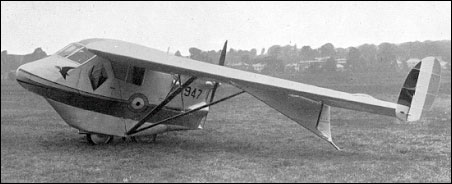 |
Westland Pterodactyl IV1931 |  |
| TAILLESS CABIN MONOPLANE | Virtual Aircraft Museum / United Kingdom / Westland |
 |
Although the Pterodactyl produced in 1931 was given the designation of Mark IV it was the third basic design actually made in this unique series, and was in service for several years. Designed primarily for research purposes, it was a high-wing three-seat cabin monoplane, powered with an inverted D.H. Gipsy III engine mounted as a pusher, its accommodation being similar in arrangement to that of the D.H. Puss Moth and other cabin monoplanes of that period, but with a wider cabin and better view for the pilot. In the second of the Pterodactyl designs, the Mark IA and IB monoplane, steering effect was obtained by horizontal "electroscope" rudders, but in the Mark IV, although this system was originally employed, control was altered to vertical rudders at the wing-tips. The rudders operated independently, but if used together provided an air-brake. It was found that all normal manoeuvres could be performed by the use of the "stick" alone. The main feature, however, was a gear by which it was possible to sweep the wings backward and forward through an angular range of 4.75°. This operation, which enabled the machine to be trimmed when the centre of gravity was varied by alternative loadings, could be effected by the pilot while in flight. The gear itself was in the nature of a large turnbuckle, connecting the front spars of the wings at their root, the rear spar roots being hinged by a ball joint and the bottom of the main Vee lift struts being similarly pivoted. The machine was initially flight-tested by Flt.-Lt. L. G. Paget, A.F.C., but development test flying was continued by Mr. F. J. Brunton and Mr. H. J. Penrose, both of whom frequently carried out aerobatics with this unusual aircraft, and a Farnborough pilot, who spun it. A.H.Lukins "The Book of Westland Aircraft", 1943
|  COMPANY PROFILE | ||||||||||||||||||||||||||||||||||||||||||||||||||||
 |

|


